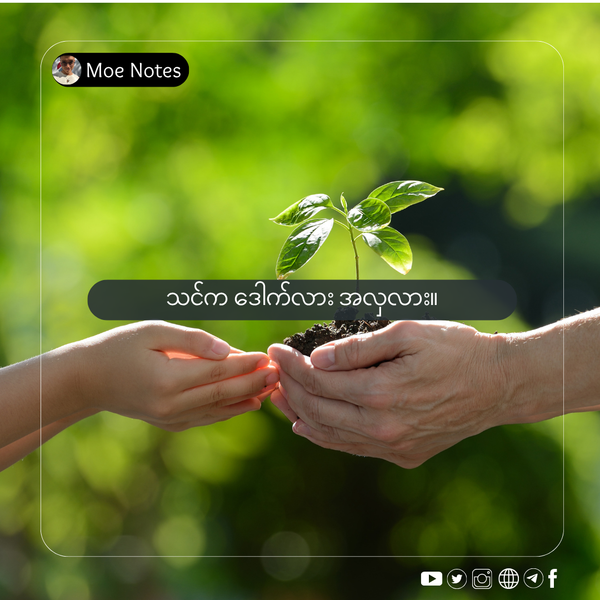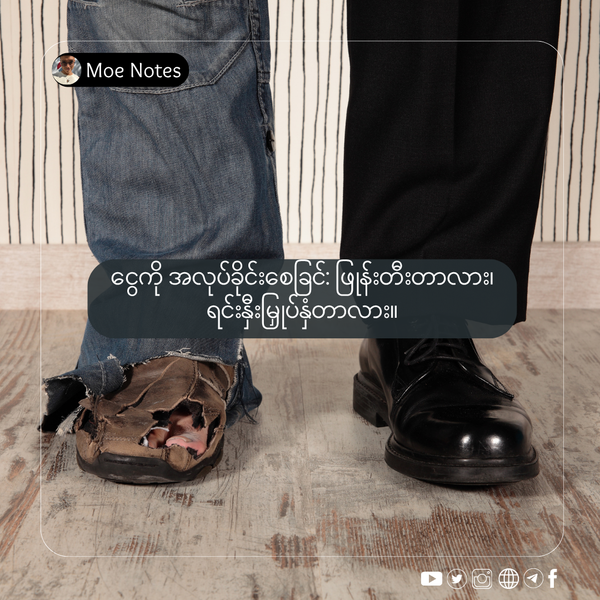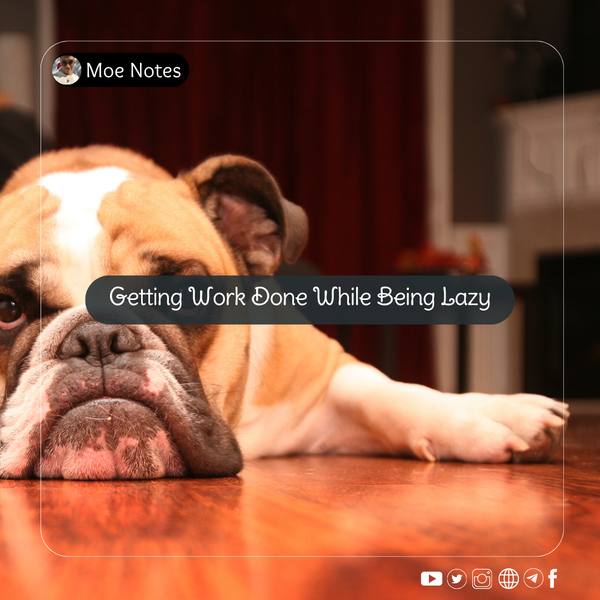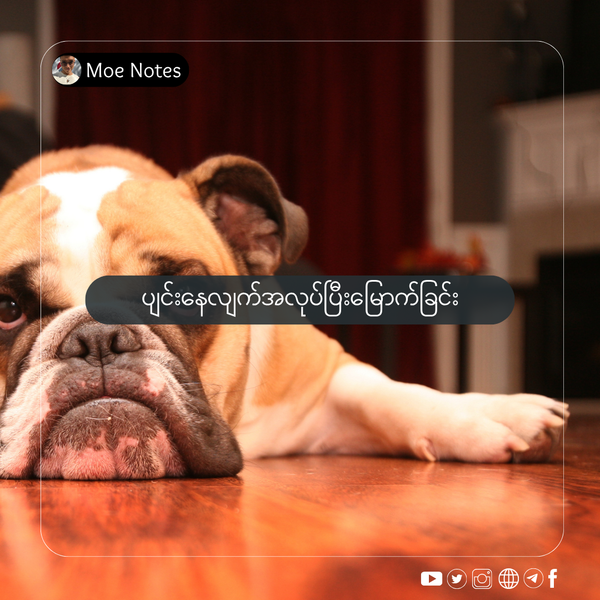An Oxford Monastery: Meditation, Philosophy, and Self-Discovery
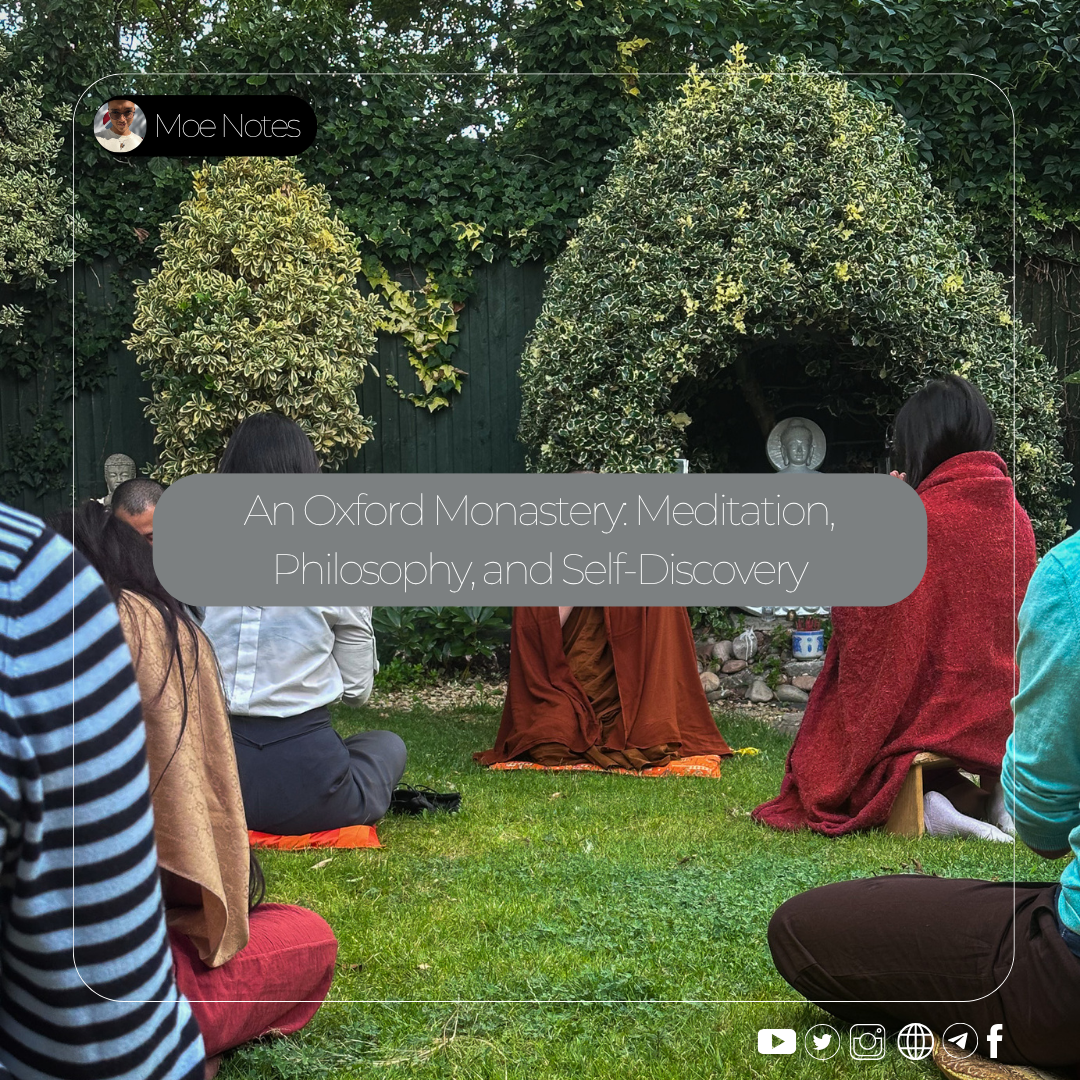
"Something you do because you want to is more fulfilling and meaningful than something you do out of fear or greed."
This article is also available in [Burmese]
Before I begin, I want to make one thing clear: I do not hold any particular attachment to any religion or ethnicity, nor do I represent any. This is simply a sharing of my thoughts and discoveries from a visit to a small monastery in the city of Oxford.
Part 1: A Sanctuary on Iffley Road
On the south side of Oxford, along the main Iffley Road, there is a small monastery called the Oxford Buddha Vihara. It’s an easy place to get to; a single bus ride from the city centre will take you there. For me, on my bicycle, it’s only about a 10-minute ride. Although it’s situated on a main road, the actual monastery grounds are set back, disconnected from the noise of the outside world.
Within the compound, there is a small house and, in the garden behind it, a hall for meditation. There, you will find monks, as well as people of all nationalities—Burmese, Thai, Chinese, European, Indian—and all ages, coming to meditate or just to visit. It feels less like a religious institution and more like a community space with its doors open to anyone seeking a moment of peace.
Part 2: A Different Kind of Meditation
On the last Saturday of every month, they hold a day-long meditation retreat. But it’s not the kind of boring retreat you might imagine. It’s done in a guided meditation format, with breaks every 30 to 45 minutes, giving everyone a chance to talk and discuss with one another.
In the morning, we chanted together from a small book with Pali scriptures written in English script. At first, I didn’t understand what we were saying, but when it was explained once in Burmese and once in English, I finally understood, “Ah, so that’s what it means.”
Then, a monk guided us in meditation.
"Breathe in slowly. Breathe out slowly. Focus only on the breath. Your body may be still, but your mind is not. The purpose of meditation is to bring that mind to a state of calm."
His teaching style was similar to a scientific approach, focusing more on the “why” than just the “what to do.”
Part 3: The Light Gained Through Questions
There was a question-and-answer session. It was here that questions were asked that gave me much to think about.
- “How does the effect of meditation differ between a Buddhist and a non-Buddhist?”
- “How can it impact our daily lives?”
- “What is its significance on the path to Nirvana?”
From the monk’s answers and the discussions with others, I came to a realisation: in Myanmar, most of us accept Buddhism as a “culture” or a “tradition,” but we don’t pay much attention to the “philosophy” and “way of life” behind it.
Fear, Greed, and Worship
Back home, we pray and chant mostly because we are “afraid of ghosts” or “want to be safe from harm” (Fear), or because we “want to go to heaven” or “want to gain merit” (Greed).
But as the monk explained, the Buddha was not a deity. He was a human being. His teachings are not commands that you “must follow,” but simply “guidelines” for living a better life.
If we don’t try to understand this “philosophy” and instead pass down the religion based only on “fear” and “greed,” it will, in the long run, move further away from its authentic truth.
Part 4: A Call for a New Perspective
You may have heard of Aung San Suu Kyi’s famous phrase, “Freedom From Fear.” Meditation is the practice of cultivating that very freedom from fear. Something you do because you want to, because you are curious, because you want to understand, is far more fulfilling than something you do because you are afraid or because you desire something in return.
I want to encourage the young people of today to approach religion from this philosophical perspective. It’s the same as listening to a motivational speaker or reading a self-help book.
- Where to start: The books of Dr. Phyo Thiha or the sermons of the Sayadaw Parmaukkha are excellent places to begin.
Conclusion
And so, around 4 PM, the day-long retreat came to an end, and I headed home. On the entire journey back, I noticed that my consciousness of my surroundings was much sharper than before.
This experience was a world away from a retreat I had previously attended at Park Farm. While Park Farm is a beautiful place, the atmosphere of the monastery there was not peaceful. It felt like it was under the dominant control of its largest donors The way people were treated from a position of superiority, the expectation that everyone should follow their will—these things were completely at odds with the character of a monastery and only created a feeling of “suffocation” or “being burnt.”
This taught me an important lesson: a true sanctuary is not defined by the beauty of its buildings, but by the respect, humility, and spirit of the people within it. The small monastery in Oxford felt like a community with open doors for everyone, while the other place made me feel like an uninvited guest. That’s why I truly value this place in Oxford.
In the end, I learned that peace is not something that exists only in temples and monasteries. It exists within our minds. We just need to find the right places and the right people to guide us in discovering it.
